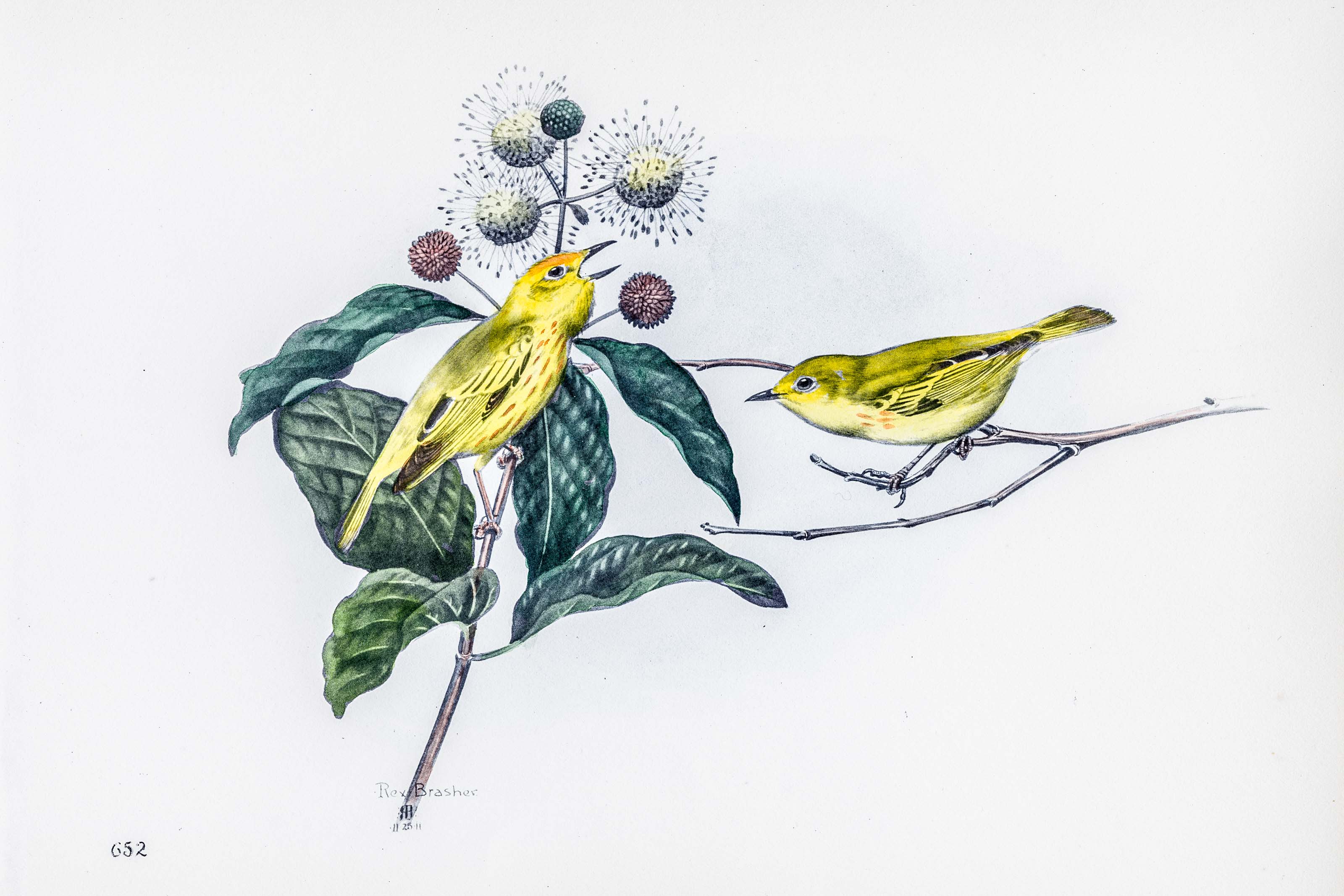
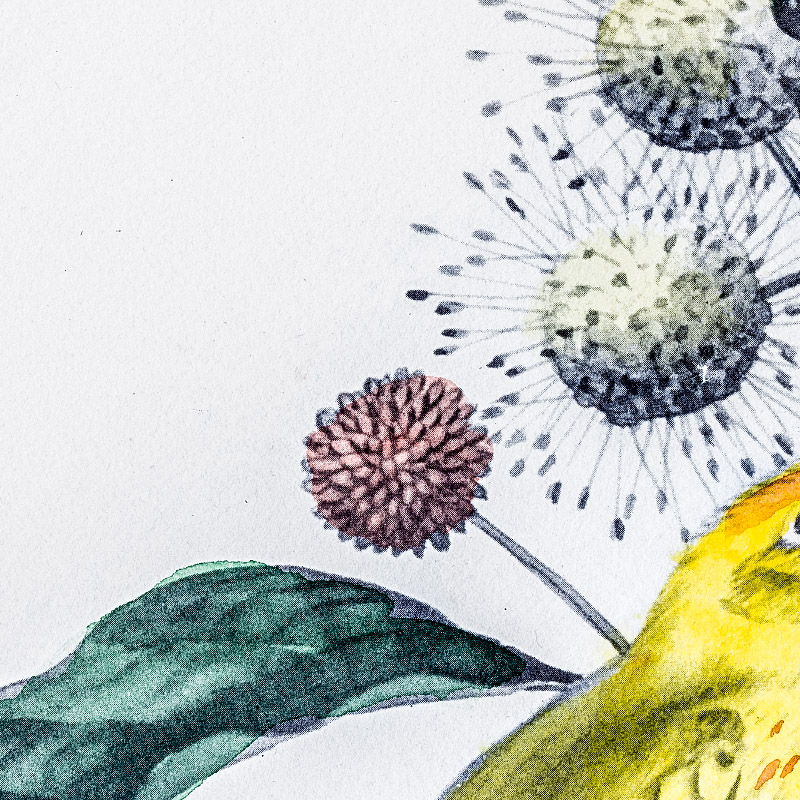
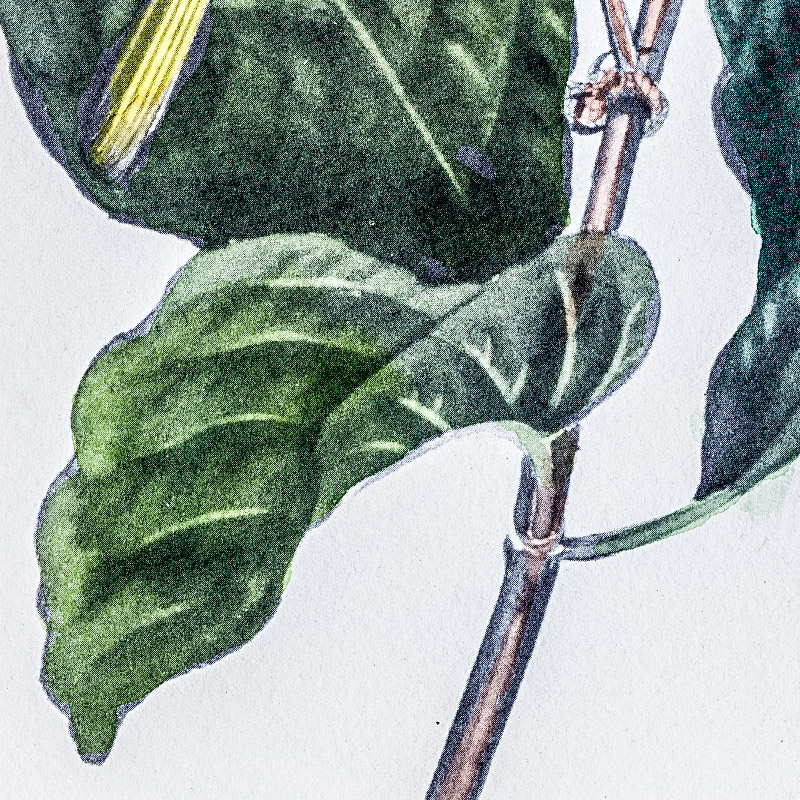
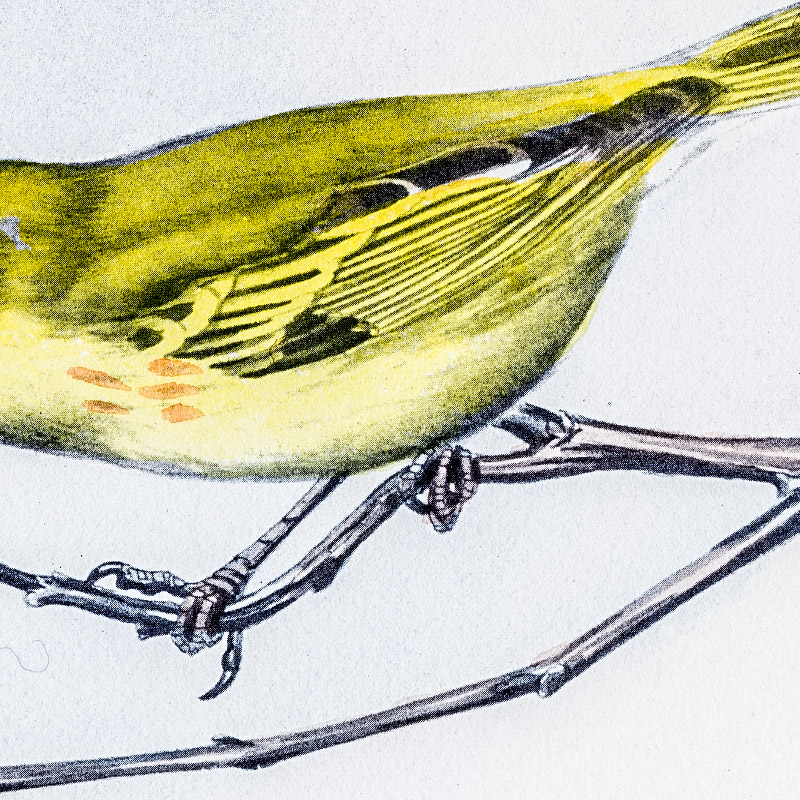
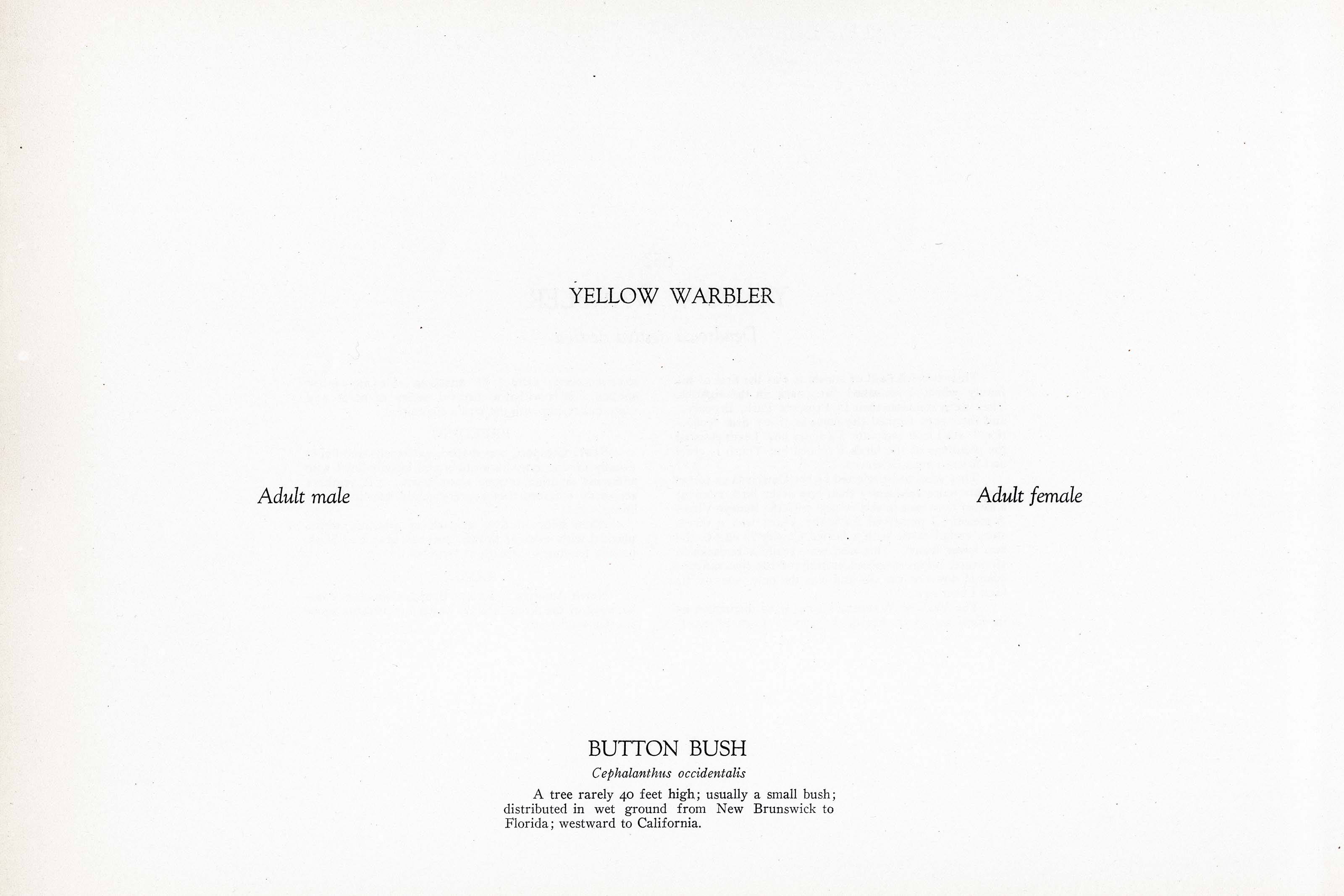
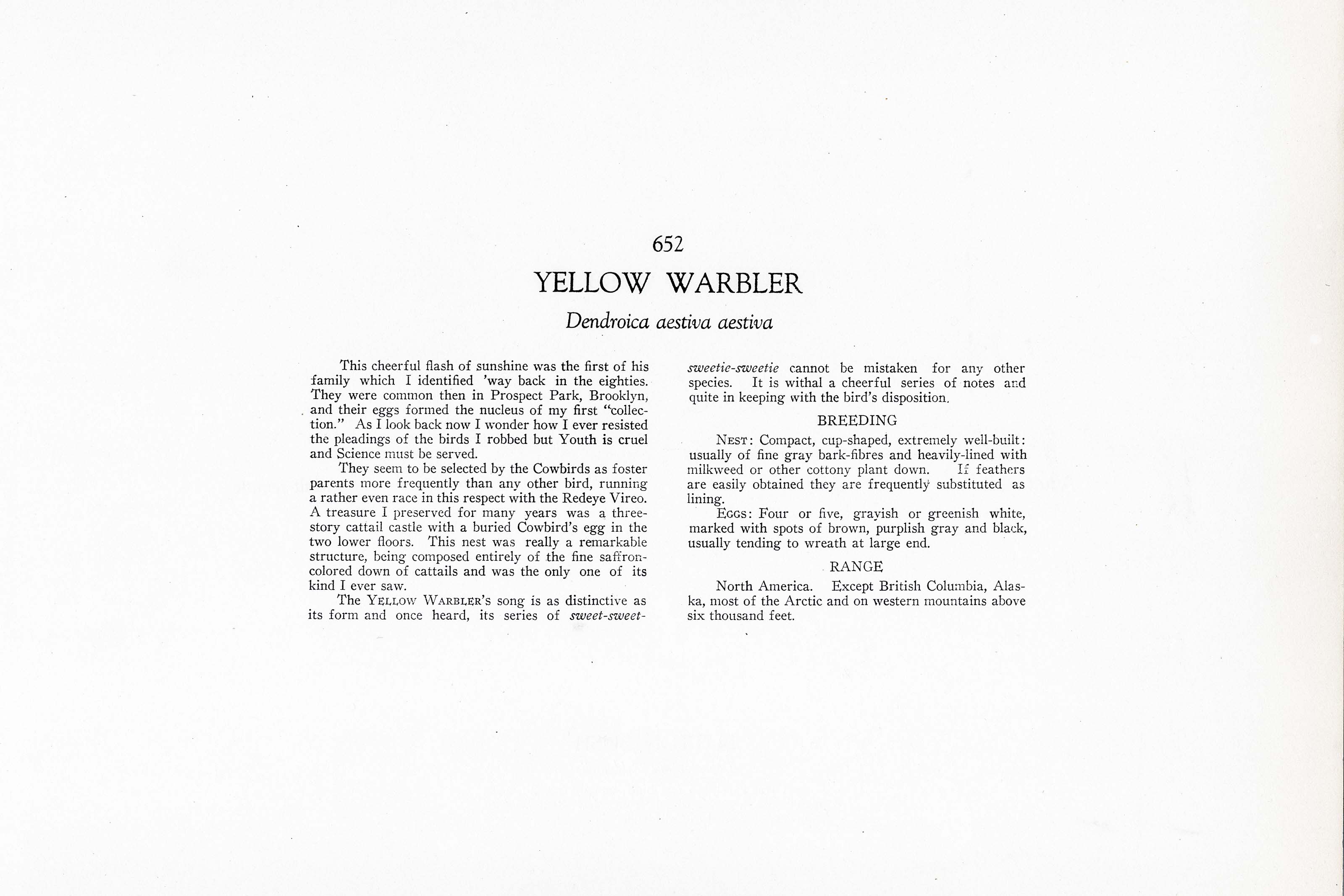

Unknown
1930
11
652
A team of dedicated board members, volunteers, and student interns has published every page in Volume 9. This volume includes 360 images of paintings and lyrical descriptions of birds, now available online for everyone to enjoy anywhere in the world. This is a monumental task. Each volume requires approximately 400 hours to photograph, edit, transcribe, catalog, and publish online. We need your support to complete this work.
If you're tech-savvy, have a good eye, are meticulous with details, and love structured data, please consider volunteering by emailing us at hello@rexbrasher.org.
We encourage all bird lovers and supporters to consider a monetary donation to support our mission to make Rex's work available for everyone. You can provide a one-time or recurring donation online.
This cheerful flash of sunshine was the first of his family which I identified 'way back in the eighties. They were common then in Prospect Park, Brooklyn, and their eggs formed the nucleus of my first "collection." As I look back now I wonder how I ever resisted the pleadings of the birds I robbed but Youth is cruel and Science must be served.
They seem to be selected by the Cowbirds as foster parents more frequently than any other bird, running a rather even race in this respect with the Redeye Vireo. A treasure I preserved for many years was a three-story cattail castle with a buried Cowbird's egg in the two lower floors. This nest was really a remarkable structure, being composed entirely of the fine saffron-colored down of cattails and was the only one of its kind I ever saw.
The YELLOW WARBLER'S song is as distinctive as its form and once heard, its series of sweet-sweet-sweetie-sweetie cannot be mistaken for any other species. It is withal a cheerful series of notes and quite in keeping with the bird's disposition.
NEST: Compact, cup-shaped, extremely well-built: usually of fine gray bark-fibres and heavily-lined with milkweed or other cottony plant down. If feathers are easily obtained they are frequently substituted as lining.
EGGS: Four or five, grayish or greenish white, marked with spots of brown, purplish gray and black, usually tending to wreath at large end.
North America. Except British Columbia, Alaska, most of the Arctic and on western mountains above six thousand feet.
A tree rarely 40 feet high; usually a small bush; distributed in wet ground from New Brunswick to Florida; westward to California.